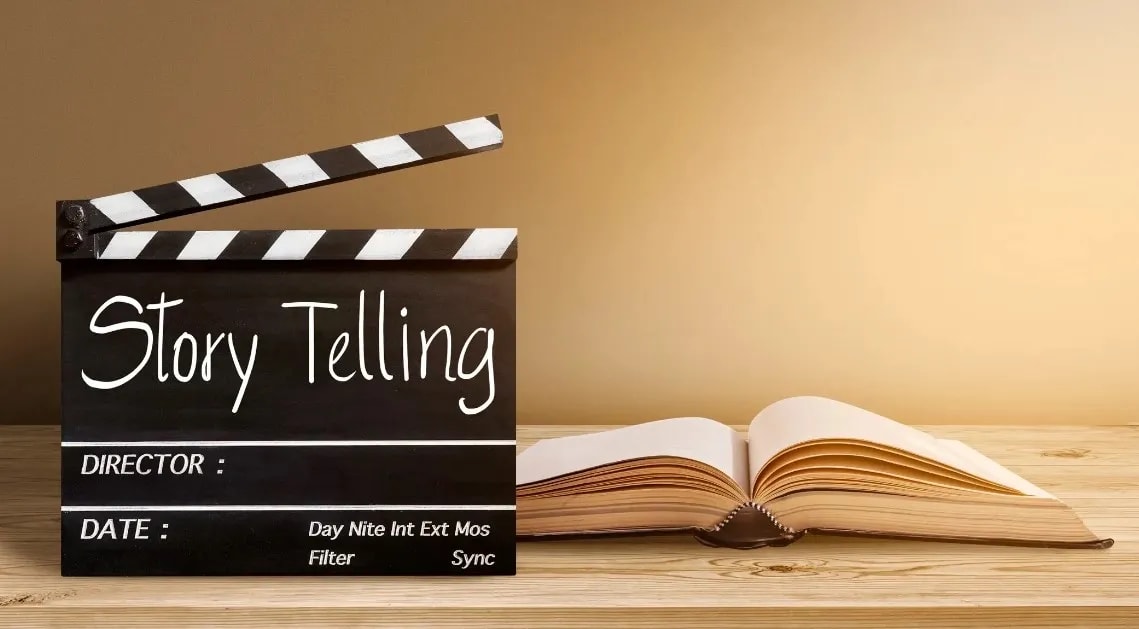Introduction
I will never leave her, regardless of who enters my life. It's not something I'm proud of, but how she resonates within me creates sound waves in my soul, melodies in my mind, and a rhythm in my heart. I don’t believe I can ever let her go, even though she isn’t technically mine. She is my biggest distraction, and I wish I were as disciplined with her as I am with the rest of the world. But here I am, venting to readers about my deep infatuation with music.
Did you think I was referring to something else? Did the introduction capture your attention right away? Did I engage you early on?
If you answered "yes" to any of these questions, you’ve found the perfect blog for learning how to master the art of creative storytelling.
What is Storytelling?
Storytelling is a dynamic art that expertly uses narratives to convey ideas, emotions, and experiences, entertaining, educating, and inspiring audiences. As one of the oldest and most effective forms of communication, it connects people through shared human experiences, highlighting our common journey and powerful connections through words.
Can you recall a powerful motivational speech from an old professor? Or perhaps a beautiful dialogue from a romantic scene in a movie? Maybe there's a compelling advertisement that influenced you to buy a product or at least left a lasting impression on your memory.
If so, likely, these moments were strategically crafted to market an idea or product through creative storytelling.
Why Creativity Matters
In simple terms, the brain responds well to stories. Research shows that storytelling retains information longer than traditional fact-based learning. For this reason, many of the highest-paid keynote speakers don’t rely solely on instructional speeches; instead, they share story after story, weaving their information seamlessly into these narratives.
What about storytelling that captivates us so profoundly? The secret ingredient is a fascinating hormone called oxytocin. Often called the "love drug" or "love hormone," oxytocin sparks joy and connection—earning its nickname as the "happy hormone."
When we immerse ourselves in a story, oxytocin works its magic, amplifying feelings of trust, compassion, and empathy. This powerful hormone helps us forge emotional bonds with the characters and narratives we encounter.
Key Elements of Engaging Storytelling
- Punch them in the face early – Start with a strong hook to engage your audience immediately. In today’s short-attention-span world, grabbing interest within seconds is crucial.
- Relatability – People connect with stories they can see themselves in. A CEO might not relate to an entry-level employee’s struggles unless they, too, started at the bottom.
- Authenticity – Sincerity matters. Audiences can detect insincerity, and genuine vulnerability can be a storytelling superpower.
- Engaging Plot – A strong plot consists of:
- Conflict: Introduce compelling obstacles.
- Resolution: Provide a satisfying conclusion.
- Pacing: Keep the audience engaged without overwhelming them.
- Rich Descriptions – Engage all five senses to fully immerse your audience in your narrative.
- Engaging Title – Just like "clickbait," an eye-catching title increases engagement.
Actionable Techniques for Storytelling
Schedule Your Writing
Let’s be honest: you won’t always feel motivated to write. The best creatives treat writing like a practice—similar to how athletes train. Even writing a few sentences a day can build momentum.
Freestyle Writing
Sometimes over-planning kills creativity. Try writing freely without worrying about structure. Some of your best ideas may come from spontaneous thoughts.
Jot Down Random Thoughts
Keep notes of sudden inspirations, whether on your phone or a notepad. You never know when an idea will become useful.
Think About Apples, Write About Oranges
If you’re stuck on a scene or concept, draw inspiration from unrelated real-life experiences.
Create Multi-Dimensional Characters
Rather than basing a character on a single real person, blend traits from multiple individuals to create depth.
Draw Inspiration from Other Art Forms
Music, paintings, and movies can all fuel your creativity. Use them as inspiration while maintaining originality.
Be Mindful of How Much You Share
Not everyone needs to see your work before it's finished. Protect your creativity from negativity and unhelpful criticism.
Common Pitfalls to Avoid
- Overcomplicating Plots – Keep it simple yet impactful.
- Description Overload – Provide just enough detail; don’t assume your audience needs everything spelled out.
- Predictability – Avoid clichés. Surprise your audience with unique twists.
- Forgetting the Audience – Always keep your target readers in mind.
- Lack of Editing – Read your work aloud and refine it thoroughly before finalizing.
Conclusion
The key to effective storytelling is practice, passion, and creative risk-taking. Each story you write brings you closer to mastering the craft.
Writing Challenge
Rewrite your favorite classic fairy tale from the villain’s perspective. It can be just one paragraph—feel free to share it in the comments!
If you enjoyed this blog post, be sure to share, like, and subscribe to the website. More exciting creative content will be released soon!
Share this post:



